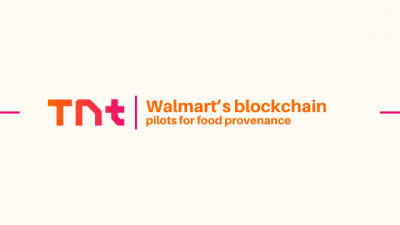Veteran energy analyst Kurush Mistry has witnessed firsthand the seismic shifts in the energy market. From the rise of shale oil to the increasing importance of renewable fuels, Mistry has weathered complex market dynamics to provide actionable insights for traders and investors. But perhaps no change has been as profound as the recent explosion of alternative data in oil analysis.
“There’s been a lot more alternative data, partly because of the availability of new technology, satellites, ship tracking, big data in general, and the ability of companies or providers to process it,” Mistry explains. This influx of new data sources, ranging from satellite imagery of oil storage facilities to real-time shipping data, has fundamentally altered how analysts approach their work.
The adoption of alternative data was accelerated, in part, by the unprecedented challenges posed by the COVID-19 pandemic. As traditional demand indicators and market trends were upended, analysts were forced to seek out new ways to gauge the pulse of the market. “The real impetus for using this data came from when we were in the immediate aftermath of the outbreak of COVID,” Mistry recalls. “At that point, many of the traditional ways of looking at things had to be put aside for a bit, because many things were just so out of whack.”
Energy’s New Reality
Faced with this new reality, Kurush Mistry and his peers turned to alternative data to fill the gaps. Mobility data from Google, for example, provided a glimpse into the dramatic drop in transportation fuel demand. Satellite imagery of inventory levels at key storage hubs offered a more timely and granular view of supply dynamics. Even seemingly unconventional metrics, like airline flight schedules, became valuable proxies for gauging the recovery in jet fuel demand.
While the initial impetus for adopting alternative data may have been the pandemic, its value has persisted even as markets have stabilized. “People saw the value in some of that data and continue to use it, not necessarily to forecast such large changes, but even to fine-tune their models to get a better level of accuracy,” Mistry notes. This ongoing integration of alternative data alongside traditional fundamentals has become the new normal in oil analysis.
However, the abundance of new data sources hasn’t come without challenges. As Mistry points out, much of this data is now readily available to anyone willing to pay for it. This democratization of information has reduced the competitive advantage of physical infrastructure and proprietary data flows. “Certain companies used to rely more on their physical infrastructure and the flow they actually did themselves, arguably the utility of that has decreased slightly if you have a lot more participants with the same or similar information,” he explains.
Leveling the Playing Field
This leveling of the data playing field has accelerated the speed at which markets react to new information. Analysts must now work even harder to identify truly unique insights and opportunities. “The market reacts much quicker to any shock or change,” Mistry observes. “As analysts, those things are very quickly priced in. You have to dig deeper and try to find more creative or interesting things to explore and possibly identify profitable trading opportunities.”
Digging deeper, in Kurush Mistry’s view, requires a multifaceted approach. It’s not enough to simply have access to alternative data; analysts must possess the skills to process, interpret, and contextualize it. This often means combining cutting-edge data science techniques with a deep fundamental understanding of the oil market’s complex dynamics. “You have to be able to merge the data with your understanding of how refineries operate, how logistics work, how geopolitical events might impact things,” Mistry explains.
The most successful analysts in this new era, according to Mistry, are those who can effectively bridge the gap between data and domain expertise. They’re equally comfortable coding complex data models as they are interpreting the nuances of a refinery’s crude slate. They understand not just what the data says, but what it means for the bigger picture of supply, demand, and price.
Kurush Mistry on the Changing Role of Alternative Data
Mistry sees the role of alternative data in oil analysis only growing in importance. As markets become increasingly complex and interconnected, the ability to identify meaningful signals amidst the noise will be a key differentiator. This will require continuous learning and adaptation on the part of analysts as new data sources and analytical techniques emerge.
At the same time, Mistry stresses that the fundamentals of good analysis remain unchanged. “Alternative data is a powerful tool, but it’s not a substitute for a deep understanding of the market,” he notes. “You still need to understand the physical realities of production, refining, and distribution. You need to have a grasp of geopolitics and macroeconomics. The best analysts will be those who can leverage alternative data to complement and enhance this foundational knowledge.”
For aspiring analysts, Mistry’s advice is simple but profound: Never stop learning. “This is a field where you can’t afford to become complacent,” he stresses. “The market is always evolving, and the data landscape is changing even faster. The most successful analysts will be those who are constantly seeking out new information, new skills, and new perspectives.”
In Kurush Mistry’s view, the rise of alternative data represents both a challenge and an opportunity. While the barriers to entry may be lower, the bar for generating truly valuable insights is higher than ever. By combining innovative data sources with traditional market expertise, analysts can uncover the hidden trends and opportunities that drive profitable decision-making. It’s a task that requires deep curiosity, continuous adaptation, and a willingness to dig deeper — qualities that define the most successful analysts in any era.
Information contained on this page is provided by an independent third-party content provider. Binary News Network and this Site make no warranties or representations in connection therewith. If you are affiliated with this page and would like it removed please contact [email protected]



Comments